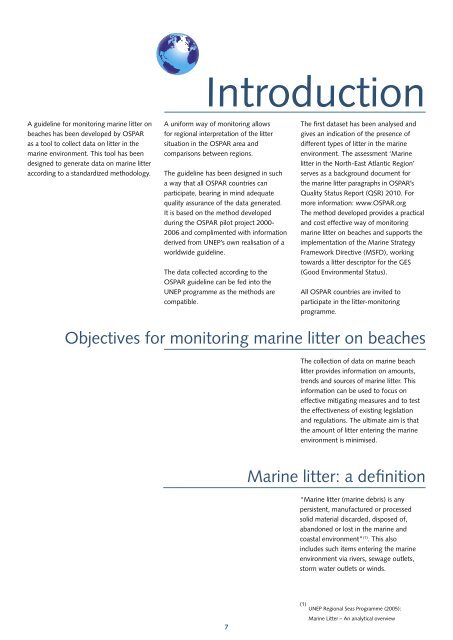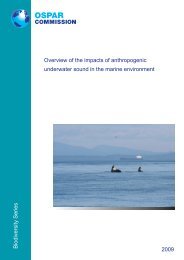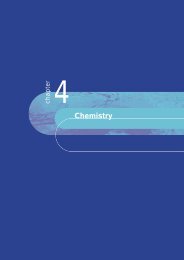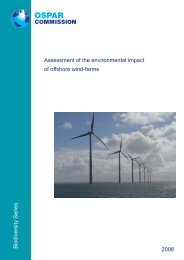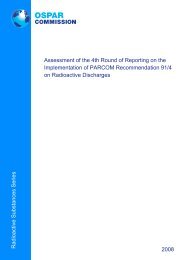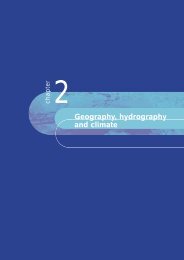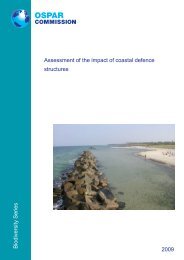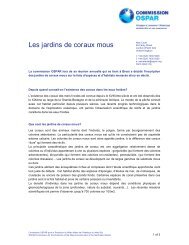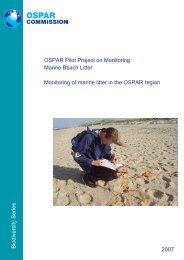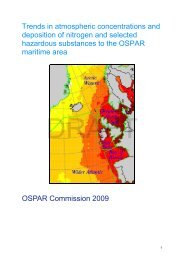Create successful ePaper yourself
Turn your PDF publications into a flip-book with our unique Google optimized e-Paper software.
A guideline for monitoring marine litter on<br />
beaches has been developed by <strong>OSPAR</strong><br />
as a tool to collect data on litter in the<br />
marine environment. This tool has been<br />
designed to generate data on marine litter<br />
according to a standardized methodology.<br />
Introduction<br />
A uniform way of monitoring allows<br />
for regional interpretation of the litter<br />
situation in the <strong>OSPAR</strong> area and<br />
comparisons between regions.<br />
The guideline has been designed in such<br />
a way that all <strong>OSPAR</strong> countries can<br />
participate, bearing in mind adequate<br />
quality assurance of the data generated.<br />
It is based on the method developed<br />
during the <strong>OSPAR</strong> pilot project 2000-<br />
2006 and complimented with information<br />
derived from UNEP’s own realisation of a<br />
worldwide guideline.<br />
The data collected according to the<br />
<strong>OSPAR</strong> guideline can be fed into the<br />
UNEP programme as the methods are<br />
compatible.<br />
Objectives for monitoring marine litter on beaches<br />
7<br />
The first dataset has been analysed and<br />
gives an indication of the presence of<br />
different types of litter in the marine<br />
environment. The assessment ‘Marine<br />
litter in the North-East Atlantic Region’<br />
serves as a background document for<br />
the marine litter paragraphs in <strong>OSPAR</strong>’s<br />
Quality Status Report (QSR) 2010. For<br />
more information: www.<strong>OSPAR</strong>.org<br />
The method developed provides a practical<br />
and cost effective way of monitoring<br />
marine litter on beaches and supports the<br />
implementation of the Marine Strategy<br />
Framework Directive (MSFD), working<br />
towards a litter descriptor for the GES<br />
(Good Environmental Status).<br />
All <strong>OSPAR</strong> countries are invited to<br />
participate in the litter-monitoring<br />
programme.<br />
The collection of data on marine beach<br />
litter provides information on amounts,<br />
trends and sources of marine litter. This<br />
information can be used to focus on<br />
effective mitigating measures and to test<br />
the effectiveness of existing legislation<br />
and regulations. The ultimate aim is that<br />
the amount of litter entering the marine<br />
environment is minimised.<br />
Marine litter: a definition<br />
“Marine litter (marine debris) is any<br />
persistent, manufactured or processed<br />
solid material discarded, disposed of,<br />
abandoned or lost in the marine and<br />
coastal environment” (1) . This also<br />
includes such items entering the marine<br />
environment via rivers, sewage outlets,<br />
storm water outlets or winds.<br />
(1) UNEP Regional Seas Programme (2005):<br />
Marine Litter – An analytical overview


